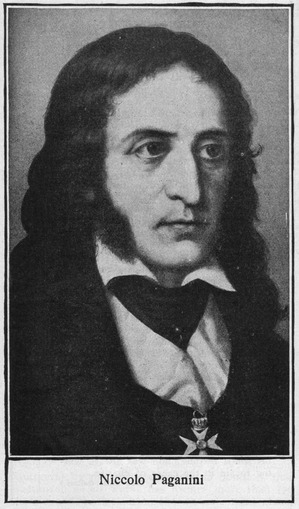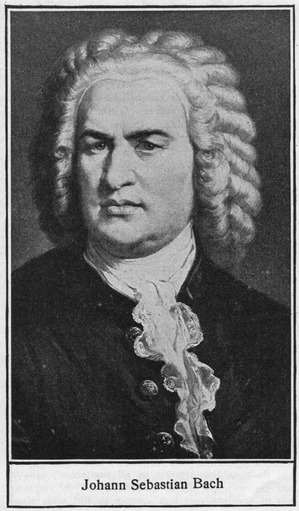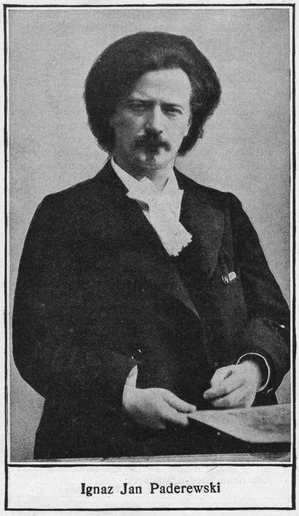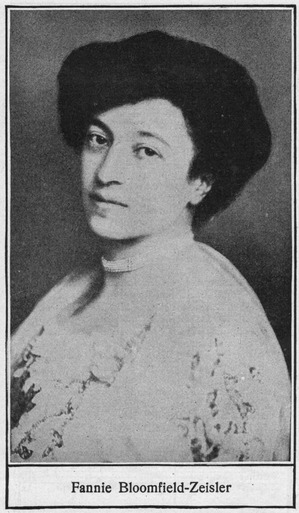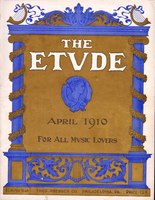(Pah’-gah-nee’-nee).
Paganini was born at Genoa, February 18, 1784, and died at Nice, May 27, 1840. He was the son of a poor man, who had shrewd ideas of making a fortune from his son’s talent, and obliged him to practice long hours every day in his early childhood. His mother, however, was a source of inspiration, and between the two of them Paganini created a sensation at his début, in his ninth year. In 1795 he went to Parma and studied under Ghiretti, and made his first tour in 1707. When fourteen years old he set off on tour on his own account. His career now was one of extraordinary success interspersed with every form of dissipation. In 1805 he became attached to the court of the Princess of Lucca, but gave this up three years later in obedience to his roving disposition. On account of his awe-inspiring skill upon his instrument, and unique personality, he was regarded by the common people as being in league with the devil, and he never took much pains to contradict the idea. In 1828 he went to Vienna, where he made a profound sensation. From thence he toured Austria and Central Europe, Paris, and in 1831, England. His success everywhere was tremendous. In England alone he made over $80,000. He was generous to his mother, and left his son a fortune; and was always willing to aid in the cause of charity.
(Bahch-“ch” gutteral).
Bach was born at Eisenach, March 21, 1681, and died at Leipsic, July 28, 1750. He came of a very musical family. His father taught him the violin, but after his father’s death, young Bach went to live with his brother, who taught him the clavichord. In 1700 he became a chorister at Luneberg, and in 1704 became organist at Armstadt, and three years later he went to Mühlhausen. In 1707 he went to Weimar as court organist, and was later appointed Concertmeister. In 1717 he became Kapellmeister at Coethen, where he remained until 1723. He then was appointed cantor at the Thomasschule, Leipsic. He was also director at the Thomaskirche, and the Nicolaikirche. He had many squabbles with the authorities, who failed to appreciate his genuis, (sic) but for the most part he lived happily enough. He was married twice, and had in all twenty children. Bach was one of the first to initiate the system of fingering now in common use, and was the first to show the practical value of “equal temperament.” His mastery over counterpoint and fugue was superb, and his Forty-eight Preludes and Fugues, and Passion Music, are imperishable. Many musicians look upon Bach as the greatest of all masters.
(Pah-der-eff’skee).
Paderewski was born at Kurylowka, Podolia, November 6, 1860. He was a pupil of Raguski at Warsaw Conservatory, which he left to go on his first concert tour, 1876-77. In 1897 (sic) he became a teacher of piano at Warsaw Conservatory. Paderewski then went to Berlin, to study under Urban and Wüerst, but in 1884 went on to Vienna to study with Leschetizky. After a short time he became Professor of piano at Strasbourg, but gave up this position for further study with Leschetizky. In 1887 he made his début in Vienna, and later in Paris. His success was overwhelming, and from that time onward has been uninterrupted. In 1890 he appeared for the first time in London with tremendous success, and the following year he was heard in the United States for the first time. His success in this and subsequent tours is too well known to need description. As a composer, Paderewski’s” opera Manru was well received on its production in Dresden in 1901, and his more recent symphony won many friends at its production by the Boston Symphony Orchestra. His most familiar composition, however, is the Minuet in G. In 1900 Paderewski established a fund, known as the Paderewski Fund, for the encouragement of American born composers.
Mr. Arthur Foote was born in Salem, Mass., March 5, 1853. As a youth he studied the pianoforte, and at fifteen was taken to B. J. Lang, on whose advice he was entered as a student of harmony in the class of Stephen A. Emery, at the New England Conservatory of Music. At Harvard, Mr. Foote studied with Prof. J. K. Paine. After graduating in 1874, he resumed his studies with Mr. B. J. Lang, at the same time continuing his theoretical work with Prof. Paine. In 1875, Foote became organist at the First Unitarian Church in Boston, a position from which he has only quite recently resigned. His orchestral compositions include an Overture, In the Mountains, two suites, a symphonic poem, and other works of striking musical value, while his cantatas, The Farewell of Hiawatha, The Wreck of the Hesperus, and The Skeleton in Armour are frequently heard. Mr. Foote has occupied many important positions in the world of music, being Honorary President of the American Guild of Organists; President of the Cecilia Society; member of the Harvard Musical Art Association, and a zealous worker in the cause of music. Mr. Foote’s career is the more remarkable in that it shows conclusively that a musician can achieve the highest results, and the greatest success, in America without having to go to Europe either for musical education or for the prestige of a foreign reputation.
(Zeys’-ler, the first syllable to rhyme with “rice.”)
Mrs. Bloomfield-Zeisler was born in Bielitz, Austria, July 16, 1866, and two years later her parents came to America, settling at Chicago. Here Mrs. Zeisler became the pupil of Bernhard Ziehn, and later of Carl Wolfsohn. Through the influence of Mme. Essipoff she became a pupil of Leschetizky, in Vienna, 1878, and five years later appeared in many concerts in that city. Upon her return to America she undertook a successful concert tour throughout the United States. In 1893 Mrs. Zeisler undertook a concert tour in Europe, appearing with great success at the principal music centers in Germany and Austria. She was so well received that she was invited to undertake another tour in the following year. Her reputation was further enhanced by the additional tour. In 1898 she made her London début, where her playing captivated the British public. While in London she was invited to play at the Lower Rhine Festival in Germany, and she also extended her tour to France. Upon her return to America she undertook further tours, and her splendid genius is now recognized from the Atlantic to the Pacific. Her style of playing is vigorous, clear, and yet capable of great tenderness. She is at her best with the modern masters. She is in the front rank of modern virtuosi of either sex.
(Ray’-ger, g as in “get.”) Reger was born at Brand, Bavaria, March 19, 1873, and was the son of a teacher. His father was transferred to Weiden in 1874, and it was here that Max Reger received his first education in music. His instructor was an organist of the name of Lindner. In 1890 he went to Sondhausen and became a pupil of Riemann. When Riemann went to Wiesbaden, Reger went with him, and subsequently became a teacher himself. In 1896 he was obliged to go into the army. A very severe illness interrupted his career about this time, and in 1898 he went home. Three years later he removed to Munich, where he married. Max Reger is one of the most talked of composers of the day. His mastery of counterpoint is supreme, and his harmonies are very skillful, though they do not always appeal to the lay mind. His compositions are much used in Berlin, and other music centers, but are not very well known in America. Indeed it is safe to say that most musicians are more willing to talk about his music than to play it. Most of his music is for organ, voice, or piano, though he has written music for string instruments. He has composed comparatively little for orchestra. He is undoubtedly one of the most original composers of the day, but posterity will have to settle his exact place.


